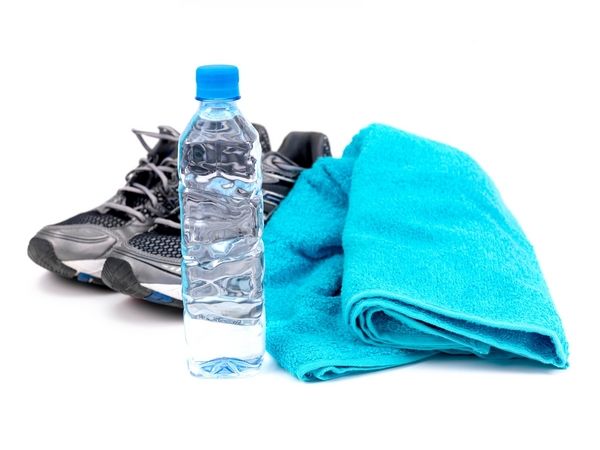
As Olympics Inspires Your 'Inner Athlete', Beware Common Injuries (Op-Ed)

Dr. Jason Lipetz is a physician with the department of Physical Medicine and Rehabilitation in the North Shore-LIJ Health System. He contributed this article to Live Science's Expert Voices: Op-Ed & Insights.
The combination of New Year's resolutions and the media surrounding the Winter Olympics in Sochi might encourage many people to embark upon fitness regimens, participation in exercise, and sports which they have not played in some time — and a re-evaluation of diet. For some, this might involve beginning a gym membership. Others might introduce an outdoor or indoor aerobic exercise regimen in the form of running or cycling, although this winter those in the northeast might find particular difficulty finding a clean track or pavement. Some might sign up for a winter basketball or tennis league.
During this introduction of exercise and athletics, it is essential to start gradually and with proper instruction and technique. Olympians, for example, are known to plan their training regimens annually — and up to four years in advance — to be certain performance goals are met. It is unreasonable for a novice athlete to expect to rise to the five or more hours of daily training which is required at the elite level.
Advice from modern day Olympians, such as Jim Ochowicz — who competed in the 1972 Olympics and coached the 2000 and 2004 USA men's Olympic road racing team — to the exercising public is to adopt a plan which allows you to "stick it out, rather than trying and giving up."
For those joining health clubs and unfamiliar with modern fitness equipment, gyms will often provide free sessions with trainers to introduce new members to safe and strategic use. For those who are able, the use of a trainer might be continued for some time until an independent exercise approach is realized. Data from the International Health, Racquet, and Sportsclub Association (IHRSA), reveals that 12 percent of new gym memberships are purchased in January, but gym use during that same month actually increases up to 50 percent. Up to 80 percent of the New Year's resolution crowd stops using the gym by mid-February, and the anticipation is that less than 20 percent of new members will actually use their membership for longer than one month.
For more prolonged aerobic exercise, such as cycling or running, it is important to select proper footwear, employ safe stretching, and only gradually increase training times, intensity and distances to minimize the chance for injury. Runner's World Magazine lists the top three injuries to runners as those affecting the knee (40 percent), the Achilles tendon (11 percent), and the hamstring (7 percent). Those injuries are directly related to rapid increases in training time, inadequate strengthening, improper stretching and faulty foot mechanics or footwear.
For those participating in competitive sports situations for the first time after a period of prolonged absence, the chance for setback or injury is arguably the greatest — the reintroduction of a competitive game situation without the necessary physical or aerobic preparation can easily expose an athlete's vulnerabilities.
Sign up for the Live Science daily newsletter now
Get the world’s most fascinating discoveries delivered straight to your inbox.

Without proper planning and guidance, older athletes can be particularly vulnerable to both acute and overuse injuries. For the new weekend warrior playing winter pickup basketball in a local school gym, overuse injuries such as rotator cuff tendinitis may sideline the player, but more acute traumatic injuries to the ligaments of the knee or ankle, or even traumatic fractures, are common and sometimes require surgery. Even the most conditioned athletes in the game, such as NBA stars Derrick Rose and Kobe Bryant, can suffer a devastating knee or Achilles injury, but maximizing conditioning, warm up, technique, use of proper gear and gradually increasing activity may well reduce the likelihood of such injury.
Adopting a sound strategy for the reintroduction of fitness and sports can help prevent both physical injury and emotional burnout, which might lead to another year of inactivity. Moderate exercise for up to thirty minutes a day may be an ideal ultimate goal with up to two additional, strenuous, aerobic workouts each week. Unfortunately, even the most cautious athletes can be injured through exercise. Minor soft-tissue injuries might respond well to a period of rest, icing or heat, compression, or even the use of anti-inflammatory medication. For more pronounced or persistent injury or pain, a physician trained in musculoskeletal medicine should be consulted.
Along with exercise, diet represents an essential component of achieving improved overall fitness. Ideally, the new year and Olympics will encourage these same new exercise warriors to consider their nutritional goals as well. Sadly, in the United States in 2010, the U.S. Centers for Disease Control and Prevention (CDC) estimates that 35 percent of adults and 17 percent of children are categorized as obese (defined through a calculation of "BMI," or body mass index, which is based upon height and weight). In addition to timing meals around a daily exercise regimen, initial recommended changes in diet can include increasing intake of fruits and vegetables, drinking water instead of sugary drinks, consuming lean proteins, switching from refined to whole grain foods and reducing overall caloric intake at dinner time.
The views expressed are those of the author and do not necessarily reflect the views of the publisher. This version of the article was originally published on Live Science.












